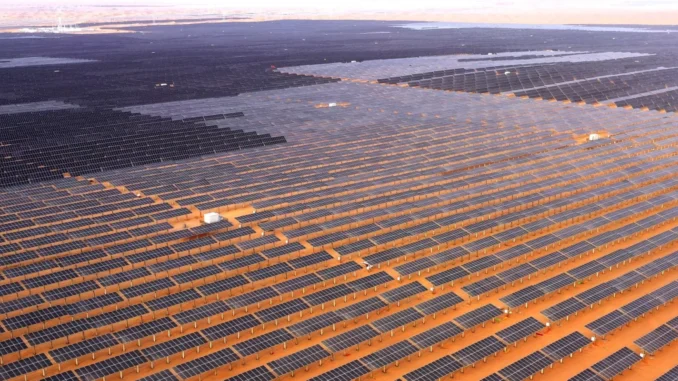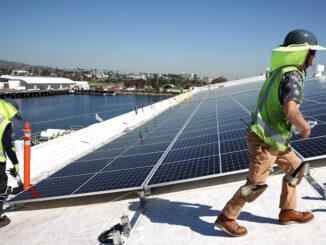
Solar panel exports from China grew by 34% in the first half of 2023, with 114 gigawatts (GW) shipped worldwide, compared to 85 GW in the same period last year, according to a new analysis by energy think tank Ember. We need to get them online ASAP.
Chinese solar exports represent around 80% of the global market share in solar manufacturing capacity, so, of course, it has major global implications for scaling up renewable deployment.
“Solar growth is going through the roof,” said Sam Hawkins, Ember’s data lead. “The world is racing to harness this cheap, clean, and abundant source of energy to power the future economy. It is clear that global manufacturing capacity is currently not the limiting factor to achieving the required fivefold growth in solar power by 2030.”
More than half of the solar panels exported from China in the first half of 2023 were headed for Europe (52.5%). The region also saw the greatest absolute growth worldwide, with exports from China up 47% year-on-year (+21 GW), reaching a total of 65 GW shipped in the first half of 2023, compared with 44 GW in the same period last year. Once installed, this new capacity could provide around 2% of Europe’s annual electricity demand – similar to the demand of Belgium.
Brazil is the next biggest importer after Europe, importing 9.5 GW in the first six months of 2023, a similar amount to the same period last year (9.4 GW). However, the fastest growth is happening across Africa and the Middle East.
South Africa saw the largest change in any country outside of Europe, importing 3.4 GW of solar panels from China in the first six months of 2023, an increase of 438% (+2.7 GW) compared to the same period last year. As a result, Africa was up 187% (+3.7 GW), the fastest-growing region.
The Middle East was the region with the next-fastest relative growth, up 64% (+2.4 GW) in the first half of 2023 compared to the same period last year. However, its high growth rates have a very low starting point. Saudi Arabia increased solar imports from China sixfold year-over-year to reach 2.8 GW in the first half of 2023, while the United Arab Emirates increased imports by 33% to 1.4 GW.
The only region to see fewer imports from China over the period was Asia, as India turned to focus on growing domestic manufacturing capacity.
The US has already cut Chinese imports to near-zero – sourcing instead from Southeast Asia – and the Biden administration’s Inflation Reduction Act has spurred significant domestic investments in solar panel manufacturing capacity.
With global manufacturing capacity expected to double again by the end of 2024 compared to the end of 2022, as other countries outside China also step up domestic manufacturing, the global supply of panels isn’t what’s bottlenecking solar growth – it’s installed PV capacity. There’s an astounding 40 GW buildup of solar panel stock in European warehouses thanks to bureaucracy, a lack of solar installers, and a long wait to get it on the grid.
“We have enough solar panels, we just need to get busy installing them,” said Sam Hawkins, data lead at Ember. “Policies should focus on ensuring installation and grid integration can ramp up as fast as global module supply.”
Electrek’s Take
The European Parliament attempted today to alleviate the years-long solar bottleneck, as it approved a requirement that EU nations complete the approval process for renewable projects within 12 months for installations in “areas conducive to renewables” and within 24 months for projects outside of those areas.
In the UK, some new solar and wind projects are expected to wait 10-15 years because the grid isn’t ready to bring them online, and that timeframe is ridiculous. That makes 12-24 months look like something to celebrate.



